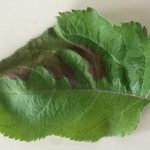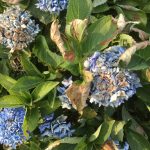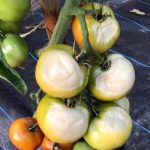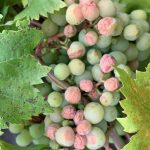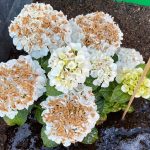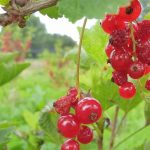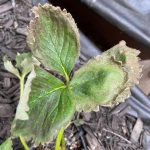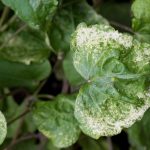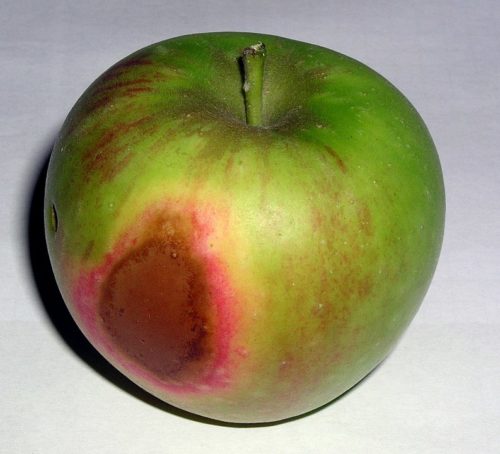Fruit that hangs in full sun can grow in periods with tropical temperatures (> 30ºC). Brown burn marks appear on the fruits in nearly ripe apples . In case of severe burning, the underlying pulp will rot.
Small fruit (raspberries, currants ) usually hang below the leaf. However, sun-exposed raspberries and berries can burn. Cut away the affected fruits.
Gooseberries usually don’t hang in the shade, gooseberry bushes don’t have enough leaves for that. Planting in partial shade (preferably only sun in the morning) prevents fire damage to small fruit.
Summer pruning of apples and grapes is best avoided during hot summers; both are prone to drought damage during times of drought and heat waves.
Pears have a thicker skin and are therefore less sensitive to sunburn.
Grapes should also be protected from the sun during very hot weather; sunburn almost certainly occurs when a truss from the shade suddenly hangs in the sun. Cut away the affected grapes. To protect the grapes in viticulture against sunburn, they are sprayed with finely ground white clay. This layer of clay mineral washes off during rain.
Make sure that the fruit trees and berry bushes have access to sufficient water; to prevent the soil from drying out, the grass around the trees and shrubs can remain a little longer.
Water regularly, the occasional large splash will give the fruit a growth spurt, making the skin thinner and more susceptible to sunburn.
The trunk of beech is extra sensitive to sunburn, by wrapping the trunk with jute sunburn is prevented and thus vertical cracks in the bark. Sunburn of the trunk is caused by a combination of a lot of sun, a high temperature and drought stress of the tree, which causes the temperature of the bark to rise too much (> 40°C) and tissue damage occurs.
Hydrangeas do not tolerate bright sun well. During a heat wave, the leaves and umbels dry up. Shielding and regular watering (at the roots) can prevent this.
Grass also suffers from drought: do not mow it too short and leave the mowed g
Sunburn occurs because moisture evaporates from the leaves faster than the roots can absorb. High temperatures, dry winds and low soil moisture cause sunburn.
Over-fertilization can also lead to leaf burn, but leaves will first turn yellow before they turn brown and wither.
There are three types of sunburn:
Sunburn Necrosis: a dark brown or black spot on the skin with the underlying pulp rotting away. Forms when the temperature of the skin exceeds 45°C.
Sunburn Browning: a brown or yellow discoloration of the skin. The underlying pulp is not affected. Forms when the temperature of the skin exceeds 45°C.
Photooxidative sunburn occurs when fruits are suddenly exposed to strong sunlight: a pale, white spot forms on the skin. Underlying pulp remains intact. Forms at temperatures of the skin below 31°C.

